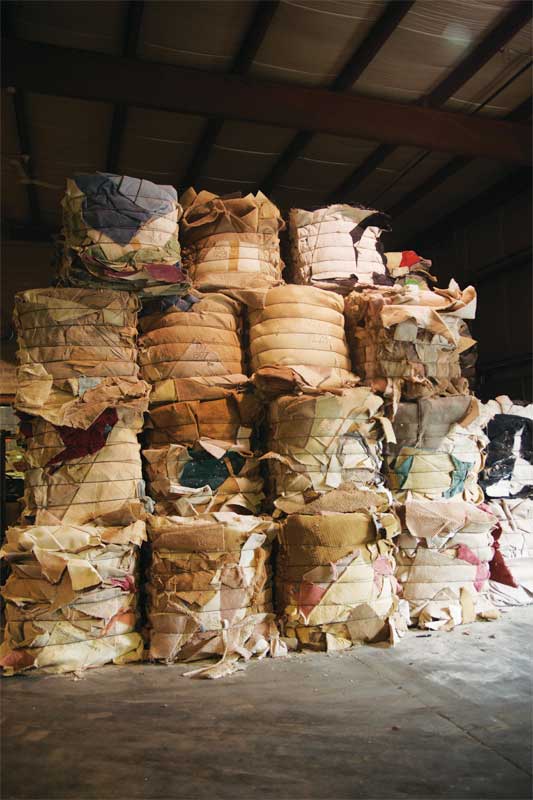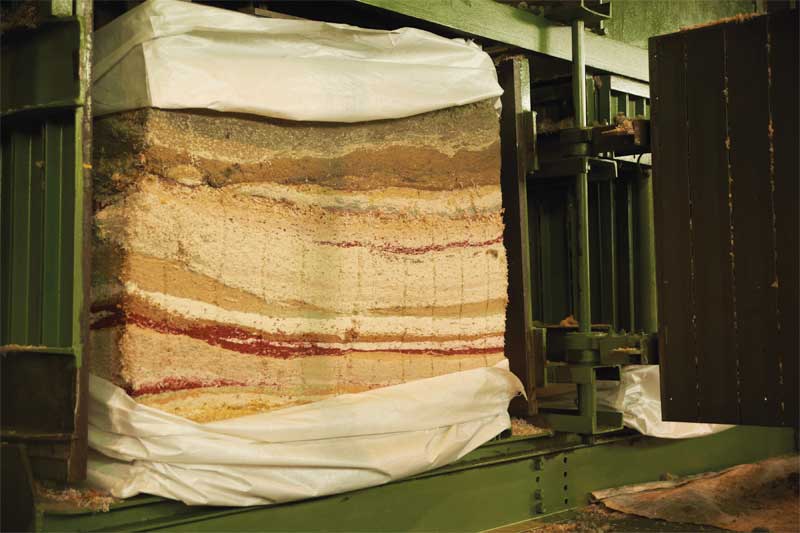
Photos courtesy CarpetCycle
Operations: Changing habits
Awareness and education are critical to maintaining circular economic practices, and can be applied to all sectors of sustainable product selection. The LBC calls for design professionals, contractors, and building owners to create the foundation for a sustainable future in the fabric of our communities. (For more, click here.)
Property owners and company decision-makers need to be conscious of how their practices and choices can have long-lasting effects on the environment, and the future rewards that can be realized by investing in sustainability now. Changes to a company’s philosophy may start with the owners, but they need to be implemented properly at all levels of an organization to increase the likelihood of correct product selection in the construction process and maintenance activities, and eventual demand for recycling practices during demolition.
Obstacles
Changes in operations may decrease initial profit margins. Since profit is the key contributor to staying in business, this may deter companies from changing to a circular business model. Habits are difficult to change, and resistance from staff may also initially occur, which can lead to temporarily low morale.
Solutions
Adapting operations to meet the needs of a circular economy is planning for the future. Proactively making these changes, prior to government or industry mandates, can prepare and allow a company to succeed in the face of its competition. Changing operations necessitates additional education for staff, which improves their value, and, in turn, will improve and sustain company morale. Socially and environmentally responsible business practices can also help attract future employees and differentiate an organization from others.
Consumers: Decisions for the future
For end-users who can drive significant market developments, transparency is key in a circular economy. Calls for more environmentally and socially responsible business initiatives continue to gain momentum; as younger generations enter the workforce, core values of sustainability will continue to grow as a priority for purchasing decisions. Shifting to full transparency in products will allow end-users to evaluate each purchase with a more sustainable mindset.
Obstacles
Eco-friendly options are often associated with higher prices. Even when social responsibility is a consideration, price is often the main factor in a purchasing decision. The age of information has led consumers to research every decision. However, this increased saturation of information can often lead to unclear or unregulated claims about a product’s sustainability. Transparency implies third-party verifications, which can financially burden start-up companies seeking to innovate in the market.
 Solutions
Solutions
Transparency helps consumers recognize what they are buying is healthy, safe, and environmentally friendly. LEED v4 offers additional points for selecting building materials with health product declarations (HPDs), environmental product declarations (EPDs), or other third-party verifications.
Understanding product transparency leads to a competitive marketing advantage over other companies. The WELL Building Standard offers credits based on the selection of products with verified limits regarding volatile organic compound (VOC) outputs. Material selection transparency will help architects offer optimal solutions to problems the customer may not be aware of, and ensure projects are up to code.




